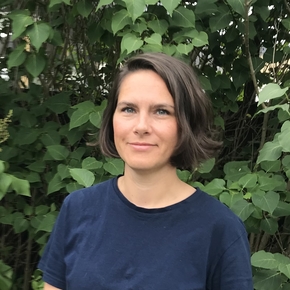Resilience and the value of the bigger picture
The effects of the pandemic have been both positive and negative with different effects for the actors within the logistics industry. How can we learn from how they adapted and reacted in order to use that in developing a resilient transport system?
Louise Hård af Segerstad (Co-director at Albaeco) and Anna Steorn (master student at Stockholm Resilience Centre and currently doing her internship at Albaeco), have both been involved with the project Resilient E2E . The project aimed to investigate how different transport actors had been affected by the pandemic, how they adapted and what challenges they faced, all in order to use that knowledge to design a more resilient and sustainable transportation system, capable of handling future crises.
In order to make ITRL’s research more accessible to the industry and the public, we asked a series of questions that give an overview of the project and inspire you to learn more.

What is the project about?
Louise: The starting point for the project is the covid-19 pandemic. A group of researchers and transport actors started to look into how we can learn from the covid-19 crisis to create a more sustainable and resilient goods transport system.
What were the results?
Louise: One of the results is that we will not be making a bigger long term project. But we’ve also done work within this of course, which is a state of the art analysis with a causal map which is quite detailed in terms of what different impacts from the covid-19 crisis had on different sectors of society, with emphasis on transport.
Anna: I wanted to learn more about what is happening in other projects concerning this and get an overview of the ongoing research. I made a map that shows what is going on in Sweden and realized that there are a lot of projects related to this, but none of them looked into the bigger picture with the climate. We identified this as a gap, which led to the risk assessment we also did.
What are the long term effects of the pandemic?
Anna: There is always a cascade effect. For example, an increase in poverty or inequality will also affect the transport sector, you have to think not one, not two, but five steps ahead. If inequality grows in China or India, it might lead to social conflicts which then impacts our transport system or our availability to certain types of goods. There are small and big things which are all connected, we can’t say that poverty isn’t connected to the transport system -- of course it is.
Louise: The goods transport system is big and global, and we can come back to the difficulty of setting a scope for this study. To say what effects the pandemic has long term or short term is very different both time-wise and geographical.

A while back we had the Suez Canal blocking for a week and it created a lot of impact. They finally got it afloat with help from the moon so it wasn’t human ingenuity alone. It’s a really illustrative sample of how we have created a dependence on global transport to supply our everyday products. I’m happy to get good chocolate, tea or coffee, things we don’t grow in Sweden, but we have also created this very big transport system with goods that don’t necessarily need to be transported because we live with this idea of comparatively advantage, but how much of that is because of environmental or social criteria in other parts of the world?
Was there any surprising results or challenges in this project?
Louise: It was surprisingly difficult to find a scope we could align around, and it related to choose a long term versus short term scope or local versus global, since the transport system is so connected. It’s hard to set a scope that limits itself to Sweden for example.
Is there anything the transport sector and industry should take away from the research?
Anna: To look at the bigger picture and not focus on solving one detail at a time. Even though you have to start somewhere, you should never lose track of the bigger picture. It is also important to look at development in the long term and the risks that are not always obvious, direct or even imaginable. Which calls for building resilience in many areas, not just for example focusing on fossil fuels or pandemics. We need a general resilience for the whole system globally.
Louise: In terms of what the transport system could learn moving forward, what kind of transport is important? How do we decide what products are crucial? And how do we make sure that we design the components in the transport system robustly? To create a resilient and sustainable transport system in the future, what are the flows that we really want to secure and which ones are just here because of our global economic system?
What is the key take away message?
Louise: While working on the transport system we should include other stakeholders as well, not just transport representatives, but also representatives for consumers or youths to get the bigger picture questions more relevant.
Anna: That transport is part of a larger system and that this system is global and interconnected with all other processes happening around the world, so you can’t look at just one thing. I think that’s the short answer to everything we’ve been talking about. You need to look at it from different perspectives which is easier with more stakeholders, but you can’t just look at “transport system”. We don’t need a transport system if we don’t have goods or consumers, we have to look at the stakeholders and other parts. Everything is connected.

